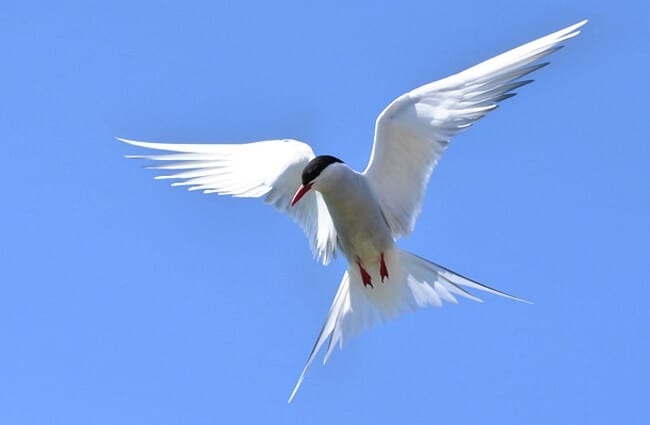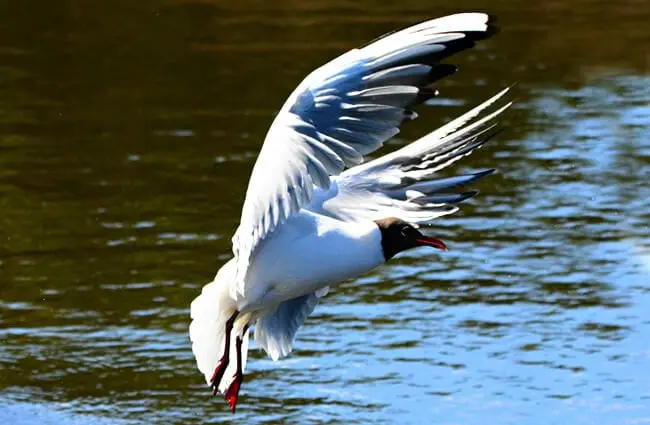Terns, elegant seabirds renowned for their graceful flight and impressive migratory feats, occupy a fascinating niche in the avian world. These birds, often mistaken for gulls due to their similar appearance, possess unique characteristics and behaviors that distinguish them. This guide delves into the world of terns, exploring their biology, habitat, behavior, and ecological significance.

Understanding Terns: A Family Portrait
Terns belong to the family Sternidae, a group of approximately 60 species found globally. They are medium to large seabirds, characterized by their streamlined bodies, pointed wings, and deeply forked tails – adaptations for efficient aerial maneuverability. Most terns boast striking plumage, often a combination of gray, white, and black, though some species exhibit more vibrant coloration. A defining feature is their often red or orange beak, sometimes tipped with black, which varies in size and shape depending on the species and feeding habits.
Distinguishing Terns from Gulls
While superficially similar, several key characteristics differentiate terns from gulls. Terns are generally more slender and agile in flight, with a more pronounced forked tail. Their beaks are typically more pointed and refined than the hooked beaks of gulls. Additionally, terns tend to dive directly into the water to catch fish, whereas gulls often scavenge or surface pick. Their calls also differ; terns produce sharp, piercing cries, while gulls have more raucous calls.
Habitat and Distribution: Where Do Terns Live?
Terns are cosmopolitan, inhabiting coastal regions, islands, and inland wetlands across the globe. Their distribution spans temperate and tropical zones, with breeding colonies often found on sandy or gravelly beaches, rocky islets, or vegetated islands. Different species have varying habitat preferences. For example, the Arctic Tern favors high Arctic breeding grounds, while the Royal Tern prefers warmer subtropical shores. Some species, like the Black Tern, breed in freshwater marshes inland.

Diet and Foraging Behavior: What Do Terns Eat?
Terns primarily feed on fish, but they are opportunistic feeders and also consume crustaceans, insects, and mollusks. Their foraging technique is remarkable. Terns hover above the water, scanning for prey before plunging headfirst into the sea to catch fish. They often forage in flocks, increasing their efficiency. Some species, like the Sandwich Tern, are known for their coordinated dives. The size of the fish consumed varies depending on the species and availability.
Reproduction and Life Cycle: Raising a Family
Terns are generally monogamous, forming long‑term pair bonds. Breeding season varies depending on the species and geographic location. They typically nest in colonies, creating shallow scrapes in the ground or using existing vegetation. The female lays one to three eggs, which are incubated by both parents. Chicks are altricial, meaning they are born helpless and rely on their parents for food and care. Parents feed the chicks regurgitated fish until they fledge, typically after a few weeks. The Arctic Tern is famed for its extraordinary breeding cycle and incredible migratory journeys.

The Arctic Tern: A Champion Migrator
The Arctic Tern undertakes the longest migration of any animal, traveling from Arctic breeding grounds to Antarctic feeding grounds and back each year, a round trip of over 70,000 kilometers (44,000 miles). This incredible journey allows them to experience perpetual daylight, maximizing their foraging opportunities. The energetic demands of such a long migration are immense, requiring exceptional physiological adaptations.
Terns in the Ecosystem: Ecological Role and Interactions
Terns play a vital role in marine and freshwater ecosystems. As predators, they help regulate fish populations, contributing to the overall health and balance of these environments. They are also prey for larger birds of prey and mammals. Their guano provides valuable nutrients for plants and contributes to the fertility of breeding colonies. Terns often interact with other seabirds, sometimes competing for resources, but also engaging in mixed‑species foraging flocks.
Terns and Humans: History, Culture, and Conservation
Throughout history, terns have held cultural significance for coastal communities. Their feathers were once used for decorative purposes, and their eggs were collected for food. However, these practices have largely declined due to conservation efforts. Today, tern populations face several threats, including habitat loss, pollution, climate change, and disturbance from human activities.

Conservation Status and What You Can Do
Several tern species are listed as threatened or endangered. Conservation efforts include habitat protection, management of breeding colonies, reduction of pollution, and mitigation of climate change impacts. Individuals can contribute by supporting conservation organizations, reducing their carbon footprint, and practicing responsible wildlife viewing. Avoiding disturbance to breeding colonies is particularly crucial.
Identifying Common Tern Species
Here is a brief overview of a few commonly encountered tern species:
- Arctic Tern: Small, slender, with a black cap and red legs.
- Sandwich Tern: Large, with a black cap and a long, pointed bill.
- Royal Tern: Large, with a white cap and an orange bill.
- Common Tern: Medium-sized, with a red bill and white underparts.
- Fairy Tern: Small, delicate, with long, white streamers during breeding season.

Tern Care in Captivity
Caring for terns in captivity requires specialized knowledge and facilities. They need spacious enclosures that mimic their natural habitat, including access to water for bathing and foraging. Their diet should consist of fresh fish, provided daily. Maintaining water quality is crucial. Providing nesting materials and minimizing disturbance during breeding season are essential for successful reproduction. Enrichment activities, such as providing opportunities for flight and foraging, are important for their well‑being. Zookeepers should be vigilant about preventing the spread of disease and monitoring the birds’ health closely.

Terns are truly remarkable birds, captivating observers with their grace, agility, and incredible journeys. Their ecological importance and cultural significance highlight the need for continued conservation efforts to ensure their survival for generations to come. By understanding and appreciating these magnificent creatures, we can contribute to their protection and the health of the ecosystems they inhabit.

![Red Angus Closeup of a beautiful Red Angus cowPhoto by: U.S. Department of Agriculture [pubic domain]https://creativecommons.org/licenses/by/2.0/](https://animals.net/wp-content/uploads/2020/03/Red-Angus-4-238x178.jpg)




![Red Angus Closeup of a beautiful Red Angus cowPhoto by: U.S. Department of Agriculture [pubic domain]https://creativecommons.org/licenses/by/2.0/](https://animals.net/wp-content/uploads/2020/03/Red-Angus-4-100x75.jpg)

